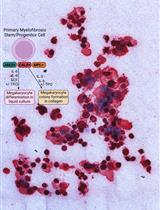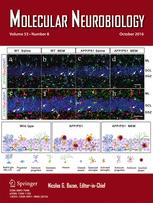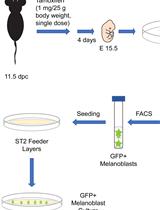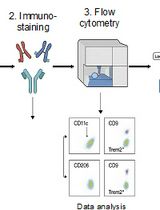- EN - English
- CN - 中文
Human Endometrial Stem Cell Isolation from Endometrium and Menstrual Blood
从子宫内膜和经血中分离人子宫内膜干细胞
发布: 2018年01月20日第8卷第2期 DOI: 10.21769/BioProtoc.2693 浏览次数: 11187
评审: Anonymous reviewer(s)

相关实验方案

来自骨髓增生性肿瘤患者的造血祖细胞的血小板生成素不依赖性巨核细胞分化
Chloe A. L. Thompson-Peach [...] Daniel Thomas
2023年01月20日 2328 阅读
Abstract
Human endometrial stem cell/stromal cells (hEnSCs) are isolated from endometrium or menstrual blood and are recognized as a valuable cell type in tissue engineering and cell therapy. Furthermore, hEnSCs, which have CD90 (a mesenchymal marker), CD105 (endoglin), CD44, CD146 (endometrial stem cell markers) and lack CD31 (Endothelial marker), CD34 (hematopoietic marker) and CD133 on the cell surface, are a new source of mesenchymal stem/stromal cells. Additionally, these cells can be encapsulated into self-assembling peptide nanofibers as a 3D scaffold for applications in the treatment of neurodegenerative diseases. Here, we describe a protocol to isolate hEnSCs from endometrium or menstrual blood.
Keywords: Endometrial stem cell (子宫内膜干细胞)Background
Cell replacement therapy is being studied as a new strategy to manage neurodegenerative diseases such as Alzheimer’ s disease, Stroke, and spinal cord injury (Tavakol et al., 2014b; 2015; 2016a and 2016c). Human endometrial stem cell/stromal cells (hEnSCs) can be isolated from menstrual blood (Azedi et al., 2014 and 2017) and endometrium. These cells have adipogenic (Khanmohammadi et al., 2014), osteogenic (Darzi et al., 2012), and chondrogenic (Kazemnejad et al., 2012) differentiation potential. Furthermore, these cells may be used in combination with scaffolds as an ingredient of smart cell-scaffolds in tissue engineering applications (Tavakol et al., 2014a; 2016b and 2017). It is worth noting that cell compartments such as the exosome, the microvesicle and other components are considered safer than therapies that use the whole cell. hEnSCs are attractive candidates for cell therapy because they are immunosuppressive and have high clonogenicity (1.25%) potential. They also have advantages over other cell types. hEnSCs are better suited for cell therapy than embryonic stem cells because hESCs do not develop teratomas. Unlike mesenchymal stem cells, hEnSCs do not decrease proliferative potency in elderly people (Ebrahimi-Barough et al., 2013). Furthermore, another advantageous feature of hEnSCs is that they can be encapsulated into self-assembling peptide nanofibers and differentiated into neuronal cells (Tavakol et al., 2014c; 2016a; 2016c and 2017). This protocol describes a simple strategy to obtain higher yields of hEnSC from both menstrual blood and endometrium for in-vitro and in-vivo which can be used in numerous studies.
Materials and Reagents
- Pipette tips: crystalline, yellow and blue (Gilson, catalog numbers: JHA004 , JHA005 and JHA007 )
- SPL cell culture dish, 90 x 15 mm (SPL Life Sciences, catalog number: 11090 )
- Falcon tubes 15 ml (SPL Life Sciences, catalog number: 50115 )
- PluriStrainer® 70 µm (Pluriselect, catalog number: 43-50070 )
- Falcon cell strainer 40 µm (Corning, Falcon®, catalog number: 352340 )
- T25 culture flasks (SPL Life Sciences, catalog number: 70125 )
- T75 culture flasks (SPL Life Sciences, catalog number: 70175 )
- Diva cups (Diva International, Lunette, Finland)
- Falcon tubes 50 ml (SPL Life Sciences, catalog number: 50050 )
- Endometrium
- Menstrual blood
- Ficoll-Hypaque (GE Healthcare, Amersham, catalog number: 17-5442-02 )
- FITC-conjugated anti CD105 (Abcam, catalog number: ab18278 )
- Allophycocyanin-conjugated anti-CD44 antibody (Abcam, catalog number: ab81424 )
- Anti-CD34 antibody [EP373Y] (Abcam, catalog number: ab81289 )
- Anti-CD133 antibody (Abcam, catalog number: ab19898 )
- Penicillin/Streptomycin (Pen/Strep) (Thermo Fisher Scientific, GibcoTM, catalog number: 15140122 )
- Amphotrypsin B solution (Sigma-Aldrich, catalog number: A2942 )
- Collagenase I (Thermo Fisher Scientific, GibcoTM, catalog number: 17100017 )
- Phosphate buffered saline (PBS) (Sigma-Aldrich, catalog number: 806552 )
- DMEM-F12 (Thermo Fisher Scientific, GibcoTM, catalog number: 11330057 )
- Fetal bovine serum (FBS) (Thermo Fisher Scientific, GibcoTM, catalog number: 10270106 )
- Trypsin-EDTA 0.25% (Thermo Fisher Scientific, GibcoTM, catalog number: 25200056 )
- Glutaraldehyde, 25% Aqueous Solution (Merck, catalog number: 354400 )
- Ethanol (Merck, catalog number: 818760 )
- Fungizone (Thermo Fisher Scientific, GibcoTM, catalog number: 15290018 )
- Ethylenediaminetetraacetic acid tetrasodium salt dehydrate (EDTA) (Sigma-Aldrich, catalog number: E6511 )
- Non-essential amino acids (Thermo Fisher Scientific, GibcoTM, catalog number: 11140035 )
- L-glutamine (Thermo Fisher Scientific, GibcoTM, catalog number: 25030081 )
- Hank’s balanced salt solution (HBSS) (Thermo Fisher Scientific, GibcoTM, catalog number: 24020117 )
- Bovine serum albumin (BSA) (Sigma-Aldrich, catalog number: A2058 )
- Isolation media for endometrium (see Recipes)
- Plating media (see Recipes)
- Basal media for the rest of passage except first passage (see Recipes)
- Isolation media for menstrual blood (see Recipes)
- Collagenase I (see Recipes)
Equipment
- Scalpel handle with scalpel (Fine Science Tools, catalog numbers: 10011-00 , 10003-12 )
- Standard sterile forceps (BYDAND, catalog number: BSU101 )
- Sterile pipette (SPL LIFE SICENCES, catalog number: 91005 )
- 37 °C, 5% CO2 cell culture incubator (New Brunswic Scientific, model: CO-150 )
- Centrifuge (Eppendorf, model: 5810 R )
- Inverted microscope (Olympus, model: IX51 )
- Refrigerator (Pars, model: 1300 )
Software
- FlowJo 7.6.1 software (FlowJo, LLC; https://www.flowjo.com)
Procedure
文章信息
版权信息
© 2018 The Authors; exclusive licensee Bio-protocol LLC.
如何引用
Tavakol, S., Azedi, F., Hoveizi, E., Ai, J. and Joghataei, M. T. (2018). Human Endometrial Stem Cell Isolation from Endometrium and Menstrual Blood. Bio-protocol 8(2): e2693. DOI: 10.21769/BioProtoc.2693.
分类
干细胞 > 成体干细胞 > 间充质干细胞
细胞生物学 > 细胞分离和培养 > 3D细胞培养
细胞生物学 > 细胞分离和培养 > 细胞分离 > 流式细胞术
您对这篇实验方法有问题吗?
在此处发布您的问题,我们将邀请本文作者来回答。同时,我们会将您的问题发布到Bio-protocol Exchange,以便寻求社区成员的帮助。
Share
Bluesky
X
Copy link















